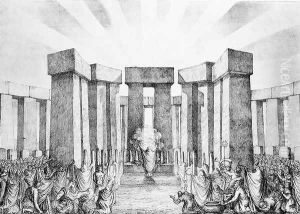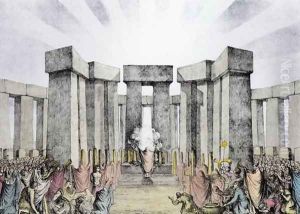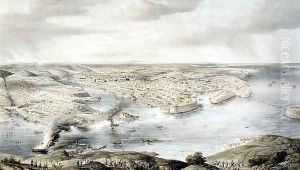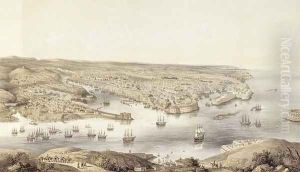Nathaniel Whittock Paintings
Nathaniel Whittock was a British artist, illustrator, and writer who lived during the 19th century. Born in 1791, he was primarily known for his work as a topographical engraver and his contributions to the field of architectural illustration. Although the details of his early life and training are not well-documented, it is evident that Whittock had a considerable impact on the visual documentation of architecture and landscapes of his time.
Whittock's work often involved producing illustrations for books, particularly those that focused on the architectural heritage of Britain. He had a keen eye for detail and was able to capture the intricacies of the buildings he depicted. His engravings served as a valuable resource for historians and architects, offering insights into the design and structure of historical edifices.
In addition to his work as an engraver, Whittock also authored several educational books, aiming to make the art of drawing and engraving more accessible to the public. His publications often included instructional material on various artistic techniques, reflecting his commitment to arts education.
Throughout his career, Whittock collaborated with other artists and engravers, contributing to the dissemination of visual culture in the Victorian era. His legacy is preserved through his numerous illustrations and written works, which remain of interest to those studying 19th-century art and architecture.
Nathaniel Whittock passed away in 1860, leaving behind a body of work that continues to be appreciated for its historical value and artistic merit. Although he may not be as widely known as some of his contemporaries, his contributions to the field of topographical engraving and his efforts to educate the public about the arts ensure that he holds a respected place in the history of British art.



